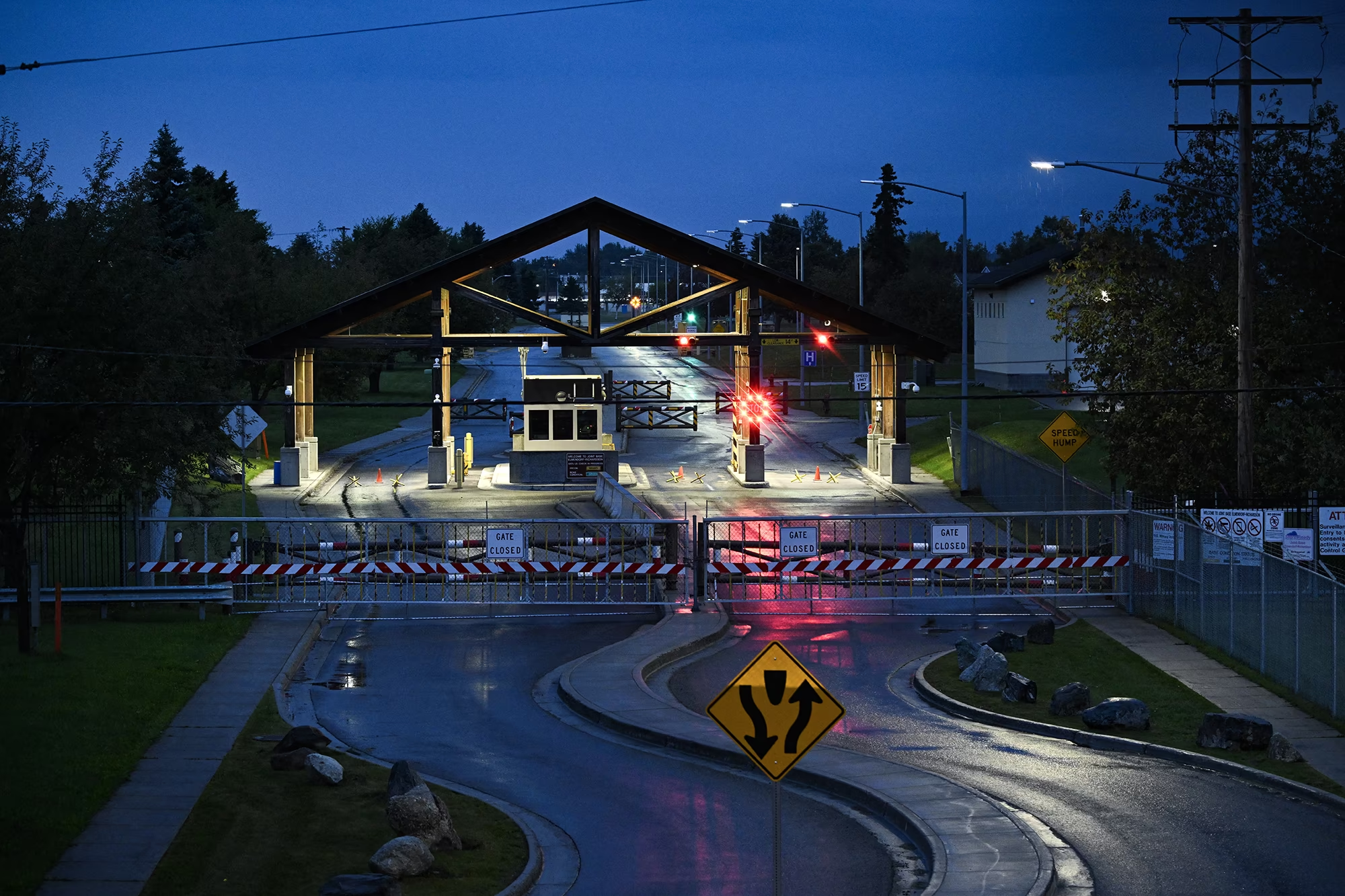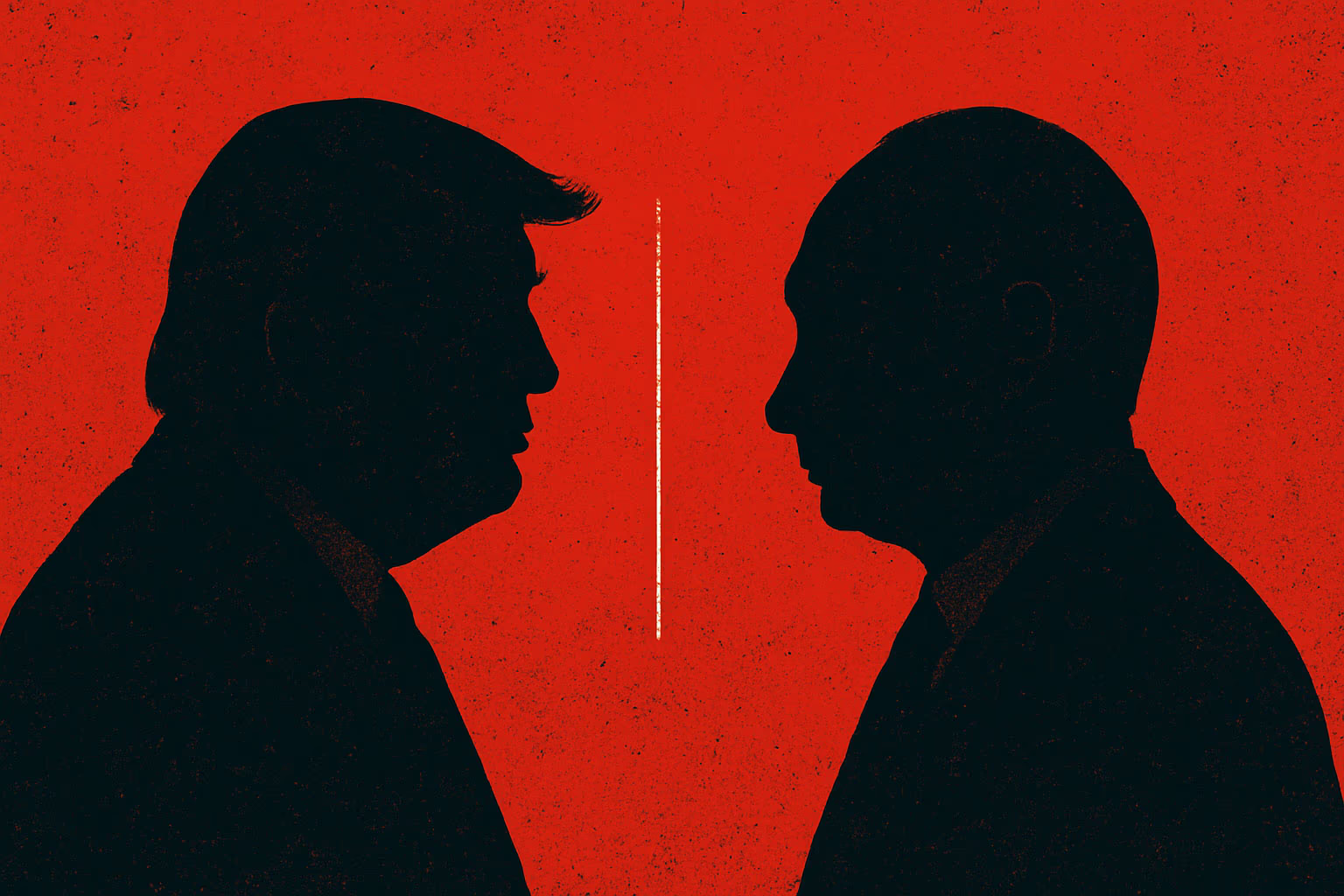The meeting between US President Donald Trump and Russian leader Vladimir Putin on Friday, August 15, took place at Joint Base Elmendorf–Richardson in Anchorage, Alaska.
The base played a pivotal role in monitoring the Soviet Union during the Cold War, but in recent years it has rarely hosted political figures—let alone the presidents of both nations. In addition to the similar flight times from Washington and Moscow, the choice of venue may have been influenced by its remoteness and the ability to insulate the event from the outside world.
“Any location that allows the event to be isolated and makes it easier to control the environment is valuable to both sides,” noted Benjamin Jensen, senior fellow at the Center for Strategic and International Studies. According to him, Trump is especially keen to avoid images of mass protests during the visit of “a war criminal like Putin” to the United States.
The post-summit press conference was also held on the base, a relatively obscure yet historically significant site.

View of one of the entrances to Joint Base Elmendorf–Richardson in Anchorage, Alaska, August 13, 2025.
A Key U.S. Military Hub in the Arctic and the Asia-Pacific Region
Joint Base Elmendorf–Richardson is home to the U.S. Air Force’s 3rd Wing, which operates fighter aircraft, including the F-22 Raptor. The facility is regarded as a critical hub for military operations in the Asia-Pacific region, the Arctic, and along the U.S. West Coast.
According to U.S. military data, more than 32,000 people live on the base—about 10% of Anchorage’s population. It contains infrastructure valued at roughly $15 billion and spans 85,000 acres. The base is located about 11 miles (18 kilometers) from the city center.
Experts estimate that this is effectively the only location in Alaska capable of providing the necessary level of security for the simultaneous visit of Donald Trump and Vladimir Putin.
From Cold War ‘Air Shield’ to Alaska’s Largest Base
Joint Base Elmendorf–Richardson, in its current form, was established in 2010 through the merger of Elmendorf Air Force Base and Fort Richardson.
During the Cold War, Elmendorf played a key role in monitoring the Soviet Union, as well as tracking potential nuclear strikes or military activity in the Pacific region. This earned it the nickname “Top Cover for North America.”
The U.S. Army first established a presence in Alaska in 1867, shortly after the territory was purchased from Russia. The Air Force arrived in 1941 amid threats linked to World War II, and its importance only grew as relations with the USSR rapidly deteriorated. As the base’s website notes: "Elmendorf Field played an increasingly important role in the defense of North America as the uncertain military relationship between the United States and the Soviet Union evolved into the Cold War."
In 1951, the Army moved to the new Fort Richardson, while the Air Force took over the old site, renaming it Elmendorf Air Force Base. The 2010 merger of the two installations was accompanied by an expansion of infrastructure, making the complex the largest military hub in Alaska.

Putin and Trump to Meet in Alaska to Discuss Russia’s War Against Ukraine
For Kyiv, It Could Be a Moment to Choose Between Prolonging a War of Attrition and Seeking to End It on Terms That Preclude Another Attack

A Century and a Half Since the Sale of Alaska to the U.S.—The Story of a Deal That Redrew the World Map
How Russian Territory Became an American State and Why Trump and Putin Will Meet There
Historic Visits by Presidents and World Leaders
Joint Base Elmendorf–Richardson has already hosted at least four U.S. presidents and one foreign leader.
In 1971, the base hosted a historic meeting between President Richard Nixon and Emperor Hirohito of Japan—the first time a reigning Japanese emperor had visited a foreign country. Thousands gathered in a hangar to witness the event. In 1983, Ronald Reagan stopped here en route to Japan and South Korea. In 2015, Barack Obama arrived at the base to take part in the GLACIER conference, and in 2023, Joe Biden held a September 11 memorial ceremony there.
At other times, high-level visits from Washington have mostly been limited to defense officials assessing Arctic service conditions and discussing the base’s mission. For example, in 2023, then–Deputy Secretary of Defense Kathleen Hicks visited to address quality-of-life issues for service members stationed in Arctic regions.
